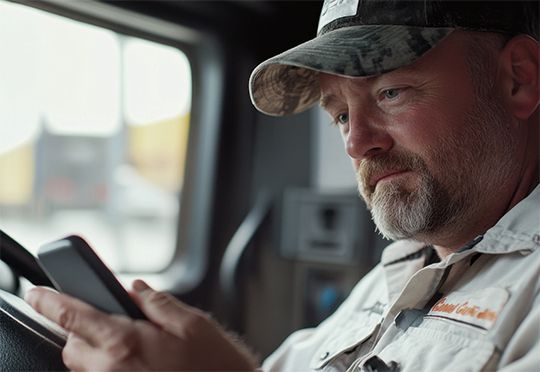
26 Plumbing Statistics and Trends Influencing 2026
As an industry valued near $170 billion, the plumbing sector is anything but stagnant. While often seen as a traditional trade, the current environment is shaped by big demographic shifts and a technology revolution. Plumbing statistics and trends influencing 2026 reveal a deep tension. Demand is booming because of aging infrastructure and rising construction, but a labor shortage threatens to slow growth.
Today’s plumbing professionals are quickly adopting smart water technologies and fleet telematics to maximize efficiency and meet customer demand. Tomorrow’s plumbers need simple digital tools and clear hiring practices to keep up with consumer expectations and demand for work.
Key takeaways:
- Nonresidential construction is fueling a market estimated at nearly $170 billion, showing steady growth.
- The U.S. faces a growing shortage — forecast to hit 550,000 plumbers by 2026 — due to a quickly retiring workforce and high churn rates.
- The future of plumbing is digital, smart water tools expected to reach $50 billion globally and telematics helping manage fleets more efficiently.
U.S. plumbing industry statistics
The plumbing industry remains a resilient pillar of the U.S. economy. The sector is driven primarily by nonresidential construction and the constant need for maintaining aging infrastructure. Plumbing services are considered recession-proof due to the urgent nature of repairs, and the industry's sustained growth reflects its fundamental importance to both commercial and residential markets.

- Plumbing industry revenue had a compound annual growth rate (CAGR) of around 3.2% for the five-year period ending in 2025. IBISWorld
- Plumbing revenue for 2025 is estimated to be around $169.8 billion. IBISWorld
- Nonresidential construction makes up more than two-thirds of U.S. plumbing industry revenue. IBISWorld
- General plumbing services account for around 50% of all plumbing businesses, while the other 50% comes from specialties such as sprinkler systems and steamfitting. IBISWorld
- Around 32% of employed Americans now work in the trades, including 38% of Gen Z workers. Credit Karma
- The plumbing industry employs 736,000 people in the U.S. IBISWorld
Plumbing market trends
The plumbing industry is dropping its old-school image, driven by the pressures of environmental sustainability and operational efficiency. Whether it’s commercial buildings, residential smart homes, or modern fleet management, technology is creating new, growing revenue streams in smart technology and water conservation.

- The global smart water management market is forecast to reach $50.7 billion by 2033, with a CAGR of almost 13%. Grand View Research
- North America has the largest share of the global smart water management market with 34%. Grand View Research
- U.S. investment in digital water solutions, including AI, is expected to grow by 6.5% annually. Fortune Business Insights
- Plumbing fleet telematics is predicted to have a CAGR of almost 14% globally from 2025 to 2033. Growth Market Reports
- Replacing aging plumbing infrastructure is a key issue, with over $1 trillion in investment needed over two decades. GP Radar
- Greywater recycling is a growing trend, with a global CAGR of nearly 7%, and North America capturing almost 32% of that market. Coherent Market Insights
Plumbing workforce trends
The skilled labor shortage is the biggest hurdle for plumbing businesses today. With a large portion of the current workforce nearing retirement, the industry is struggling to attract and retain the next generation. Companies are pushed to find ways to make every technician as productive as possible.
- The employment demand for plumbers, pipefitters, and steamfitters is predicted to grow by 4% between 2024 and 2034. Bureau of Labor Statistics
- The average wage range for plumbers across the United States is $68K to $82K. Bureau of Labor Statistics
- The top-paying states for plumbers are Alaska, California, Massachusetts, and New York. Bureau of Labor Statistics
- More than 20% of plumbers are over 55. Consumer Affairs
- Around one-third of skilled trade professionals are projected to retire over the next 10 years, outpacing younger workers entering the field. People Ready
- 31% of millennials and 23% of Gen Z view trade jobs more favorably than corporate jobs. Credit Karma
- AI emergence has led to 66% of Americans believing trade professionals have greater job security than corporate professionals. Credit Karma
Key plumbing industry challenges
Beyond the chronic workforce shortage, plumbing businesses face challenges in managing operational costs and adapting skills and practices to match demand for new technologies.

- There will be approximately 44,000 new plumbing, pipefitting, and steamfitting job openings each year over the next decade (2024-2034). Bureau of Labor Statistics
- The United States is forecast to face a shortage of around 550,000 plumbers by 2026. John Dunham and Associates
- A high churn rate may cost companies across all trades more than $5.3 billion annually in talent acquisition and training costs. McKinsey & Company
- Annual hiring for plumbers, pipefitters, steamfitters, and other high-churn trades is projected to be more than 20 times the predicted annual increase in new trade jobs from 2022 to 2032. McKinsey & Company
- 78% of entry-level plumbers use at least one form of digital technology, a 45% increase from 2020. Zippia
- Plumbing fixture costs have risen by around 30% since 2020. Bureau of Labor Statistics
- 88% of business owners, including plumbers, say they are being impacted by inflation, leading them to raise their prices. Bank of America
Leverage GPS for plumbing fleets with Linxup
These plumbing statistics confirm that the industry's future will be defined by managing efficiencies and competing in a tight labor market. Whether scaling your business to meet soaring demand or minimizing water waste on every service call, optimizing your field operations is key.
To ensure you’re always on time and maximizing plumber productivity, explore how Linxup’s plumbing GPS tracking solutions can help you optimize management of your most valuable assets. Request a demo today.



